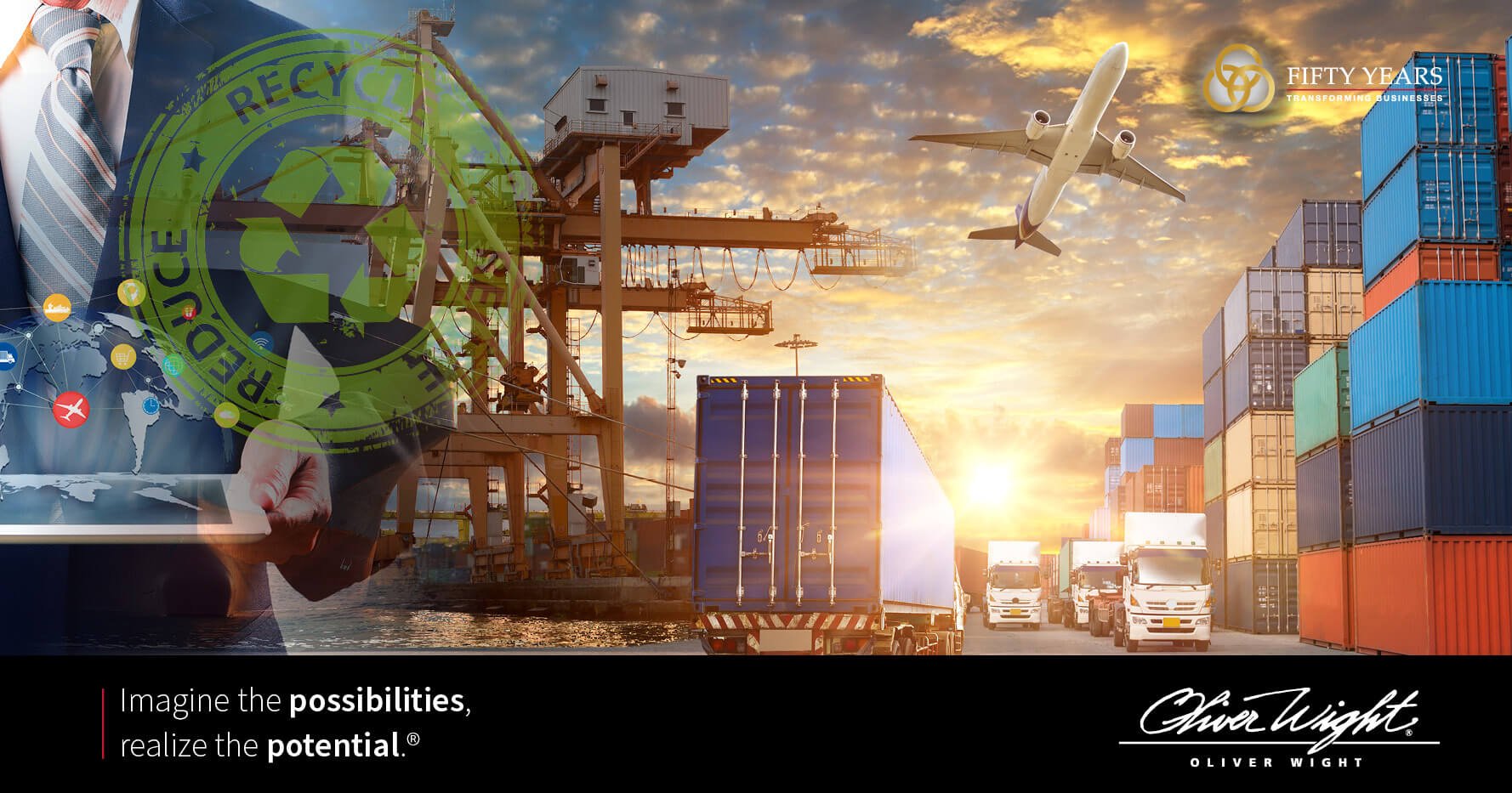Sustainability and the supply chain
24 Mar 2020
Blog

By Flavio Pietrocola, Partner at Oliver Wight EAME
Until a few years ago, if you’d asked any senior leader or executive the most important contributing factor to the ‘sustainability’ of their business they would most likely have answered that it was rate of growth and financial profitability. Yet, more recently, the importance has unarguably shifted towards a more balanced approach, which includes environmental impact. The increasing concern over climate change has resulted in new laws and has been reflected in changing consumer behaviours to such an extent that it can no longer be ignored by businesses, and they are being forced to adapt in order to survive. Terms such as ‘circular economy’ and ‘reduce-reuse-recycle’ are becoming common in boardrooms and high-streets alike.
At Oliver Wight, we see organisations taking greater and urgent steps to become more environmentally sustainable, in response to rapidly changing customer behaviour. In one perhaps predictable example, a drinks retailer we work with is progressively switching from logistically efficient polyethylene terephthalate (PET) containers to 100% recyclable glass, despite higher reverse logistics costs. This was after market research revealed that consumers were more likely to purchase more environmentally friendly glass bottles over plastic.
While changing packaging materials might be good for the environment, businesses need to also consider how changes will impact the operations of the end-to-end supply chain. In this case, the business had to react to consumer sentiment, however its footprint will have to fundamentally evolve to absorb the current impact on its operations. So, more needs to be done, and that starts with looking at how any changes have an effect on the overall sustainability of the business.
Many businesses are failing to look at the (bigger) picture beyond short-term solutions. As the above example demonstrates, simply changing the materials used in product packaging does not render the problem solved. Organisations should be looking more closely at their people and processes alongside the overall business plan, to see where they can make more fundamental improvements. This might include ways to offer their product differently, such as moving towards a ‘product as a service’ model. We’ve already seen this to some extent creeping into the consumer goods industry, with supermarkets offering a variety of foods in loose form for customers to purchase as much as they need and use their own containers. Not only does this reduce food waste but cuts down on packaging. In another test with some UK retailers, eliminating ‘buy-one-get-one-free’ promotions cut fresh food waste by 20% as consumers were no longer invited to buy volume they did not really need.
So why aren’t all businesses moving towards this model? There are a number of barriers to overcome for any organisation looking to make this shift, including the implications it could have for brand awareness if packaging is removed and potential health and safety restrictions for some products. There is also the issue of cost. A product-as-a-service business model is less cost efficient in the short-term, and this means financial teams within businesses that are not looking at the longer-term planning horizon may fail to see the benefits.
Unfortunately, we have also found that many businesses do not have eco-friendly KPI’s included in their business plans and performance scorecards, and they have no measures in place to monitor their level of environmental sustainability, or level of circular economy they could deploy. Changes are often being made because they’re driven by client and consumer pressure or government regulation without a longer term holistic, end-to-end supply vision and approach. While financial teams pressure the business on short-term cost reduction and profitability, they miss the point on how improving environmental sustainability can influence financial sustainability in the long-run, or even determine the survival of the business.
We saw another example of this with a car manufacturer, which was forced to look at its demand planning processes when the EU introduced new regulations requiring that a specific percentage of the cars it produced were electric. Exceeding the internal combustion vs. electric vehicle ratio now results in the company being heavily fined, so it became very important that its sales forecast was more accurate to predict how many electrical vehicles to assemble - even if at a loss. Although the introduction of this process was driven by an external force, its impact on the business will be beneficial or disruptive depending on whether it is managed just to solve short-term issues or re-think itself strategically.
In 2020 businesses need to continually look at ways that they can reduce their impact on the environment through a programme of continuous improvement which can only successfully happen if applied over the long-term planning horizon. There are European non-mandatory recycling targets of 65% of municipal waste by 2035 and 70% of packaging waste by 2030, with individual levels as high as 85% for paper and cardboard - how long will it be before they become enforceable? Organisations that make steps to address these issues now are the ones that will be best equipped to survive, and thrive, in the future. The time is now.Is your business taking steps to ensure it is environmentally sustainable? Let us know by getting in touch on Twitter or connect with Oliver Wight EAME or Flavio on LinkedIn.